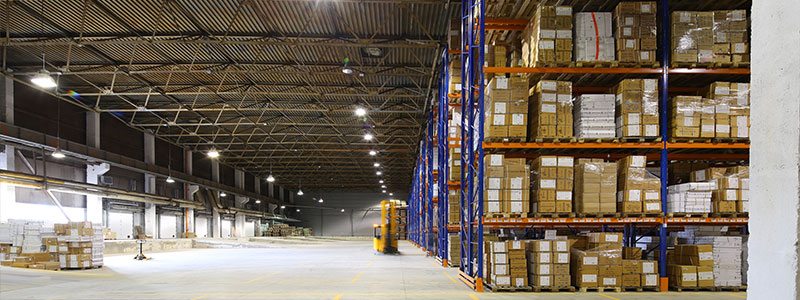
No warehouse is exactly alike, so each warehouse has different needs when it comes to its pallet racking system. The size of your warehouse can determine the types of racks you need, and the types of racks you need can determine the layout of your racking system. The method by which your product is pulled also dictates how your warehouse and pallet racks will be arranged and how they can be accessed. Luckily there are multiple pallet racking options to fit your needs depending on the type of inventory you handle and your order flow. Here are 5 tips to help you build a better pallet racking system for your warehouse.
Storage Density. If what your warehouse needs is storage maximization, consider deep lane storage solutions like drive-in, drive-through, or push-back racks. This will make for more room to store products in your warehouse and gives you the freedom to arrange products by how frequently they are needed. For items which are hard to store like pipes and wood, consider using cantilever racks.
FIFO or LIFO. If you manage your products on a first in first out basis, you do not want to use racks where these products could be pushed to the back. Use selective pallet racking to be able to easily pick products and avoid extra handling and extra handling costs.
Picking Profiles. Consider how your products are being handled and picked. Some products require being picked by the pallet while others are being picked by hand. Different types of picking require different racking to make them reachable for your employees. Also take into account how the products are ordered and how they are packed. These too can have and influence on your racking system and the flow of your warehouse.
Rack Decking. The use of rack decking has an effect on your racking system. Rack decking aids in the stability of your pallet racks. The most common rack decking is wire decking, and it is used to help stabilize pallets on load beams. The density and weight of the pallets you are handling will determine whether or not you need additional rack decking.
Forklift Access. Along with picking profiles comes forklift access. For large loads which will be picked by the pallet or even the case, you need to ensure that a forklift can reach them. This means you need to space your pallet racks an appropriate distance apart so the forklift can have easy access without running the risk of bumping into any racks or items stored on the floor.


.png)

